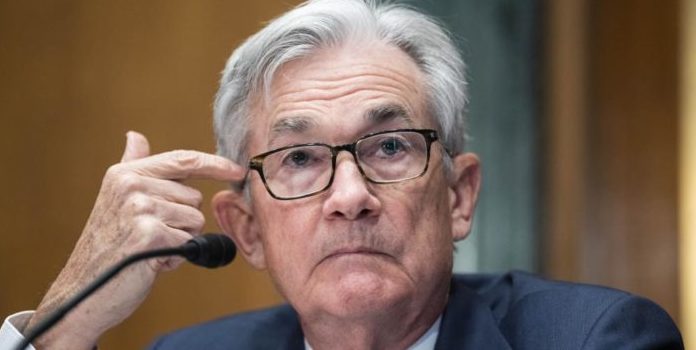(Headline USA) In an attempt to control inflation the has soared under President Joe Biden’s failing agenda, the Federal Reserve is poised this week to accelerate its most drastic steps in three decades to attack inflation by making it costlier to borrow — for a car, a home, a business deal, a credit card purchase — all of which will compound Americans’ financial strains and likely weaken the economy.
Yet with inflation having surged to a 40-year high, the Fed has come under extraordinary pressure to act aggressively to slow spending and curb the price spikes that are bedeviling households and companies.
After its latest rate-setting meeting ends Wednesday, the Fed will almost certainly announce that it’s raising its benchmark short-term interest rate by a half-percentage point — the sharpest rate hike since 2000. The Fed will likely carry out another half-point rate hike at its next meeting in June and possibly at the next one after that, in July. Economists foresee still further rate hikes in the months to follow.
What’s more, the Fed is also expected to announce Wednesday that it will begin quickly shrinking its vast stockpile of Treasury and mortgage bonds beginning in June — a move that will have the effect of further tightening credit.
Chair Jerome Powell and the Fed will take these steps largely in the dark. No one knows just how high the central bank’s short-term rate must go to slow the economy and restrain inflation. Nor do the officials know how much they can reduce the Fed’s unprecedented $9 trillion balance sheet before they risk destabilizing financial markets.
“I liken it to driving in reverse while using the rear-view mirror,” said Diane Swonk, chief economist at the consulting firm Grant Thornton. “They just don’t know what obstacles they’re going to hit.”
Yet many economists think the Fed is already acting too late. Even as inflation has soared, the Fed’s benchmark rate is in a range of just 0.25% to 0.5%, a level low enough to stimulate growth. Adjusted for inflation, the Fed’s key rate — which influences many consumer and business loans — is deep in negative territory.
That’s why Powell and other Fed officials have said in recent weeks that they want to raise rates “expeditiously,” to a level that neither boosts nor restrains the economy — what economists refer to as the “neutral” rate. Policymakers consider a neutral rate to be roughly 2.4%. But no one is certain what the neutral rate is at any particular time, especially in an economy that is evolving quickly.
If, as most economists expect, the Fed this year carries out three half-point rate hikes and then follows with three quarter-point hikes, its rate would reach roughly neutral by year’s end. Those increases would amount to the fastest pace of rate hikes since 1989, noted Roberto Perli, an economist at Piper Sandler.
Even dovish Fed officials, such as Charles Evans, president of the Federal Reserve Bank of Chicago, have endorsed that path. (Fed “doves” typically prefer keeping rates low to support hiring, while “hawks” often support higher rates to curb inflation.)
One challenge the Fed faces is that the neutral rate is even more uncertain now than usual. When the Fed’s key rate reached 2.25% to 2.5% in 2018, it triggered a drop-off in home sales and financial markets fell. The Powell Fed responded by doing a U-turn: It cut rates three times in 2019. That experience suggested that the neutral rate might be lower than the Fed thinks.
But given how much prices have since spiked, thereby reducing inflation-adjusted interest rates, whatever Fed rate would actually slow growth might be far above 2.4%.
Shrinking the Fed’s balance sheet adds another uncertainty. That is particularly true given that the Fed is expected to let $95 billion of securities roll off each month as they mature. That’s nearly double the $50 billion pace it maintained before the pandemic, the last time it reduced its bond holdings.
“Turning two knobs at the same time does make it a bit more complicated,” said Ellen Gaske, lead economist at PGIM Fixed Income.
Brett Ryan, an economist at Deutsche Bank, said the balance-sheet reduction will be roughly equivalent to three quarter-point increases through next year. When added to the expected rate hikes, that would translate into about 4 percentage points of tightening through 2023. Such a dramatic step-up in borrowing costs would send the economy into recession by late next year, Deutsche Bank forecasts.
Yet Powell is counting on the robust job market and solid consumer spending to spare the U.S. such a fate. Though the economy shrank in the January-March quarter by a 1.4% annual rate, businesses and consumers increased their spending at a solid pace.
If sustained, that spending could keep the economy expanding in the coming months and perhaps beyond.

